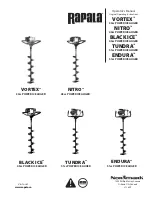
30
/ 32
User Manual
Rev. 1.0 - 29/11/12
TEX30/50/100/150/300LCD
ELETTRONICA
7.3.2 Power Amplifier
The final power stage is enclosed in a totally shielded metal container fastened
in the centre of the device.
The RF signal coming from the “main” card reaches the pilot, is amplified and is
then sent to the final stage that sees to its final amplifications up to 150W.
The amplifier is made in two stages. The first is made with BLF244 and the last
with BLF147.
In addition to the actual RF amplification, this circuit carries out the following
functions:
•
Control of the power level in output, depending on the setting
•
Reduction of the power supplied when in presence of high-level reflected
power
•
Measures of the forward and reflected power by means of directional
couplers
•
Measures of the current absorbed by the power amplifier
•
Measures of the temperature
•
Low-pass filtering of the RF signal in output
On this card is an RF sample approximately -30dB compared with the output that is
available on a BNC connector underneath the output connector of the transmitter.
This sample is useful for checking the characteristics of the carrier, but not of the
higher order harmonics.
7.3.3 Control Board
The main function of this board is to check and correct the MOSFET polarization
voltage of the RF amplifier section.
It also provides the measurement of the absorbed current and contains a circuit
for signaling power supply unit faults.
If no alarms are present, the voltage is adjusted only depending on the set output
power, with a feedback mechanism based on the reading of the power really
delivered (AGC).
The voltage is also affected by other factors, such as:
•
Excess of reflected power.
•
External AGC signals (Ext. AGC FWD, Ext. AGC RFL).
•
Excess of temperature.
•
Excess of absorbed current from the RF module.







































